Inquiry-based learning has been promoted as a pedagogical method, but is this enough? How can we help students learn better with inquiry-based learning?
 How findings from AIIBL can help your students
How findings from AIIBL can help your studentsKey Insights
- Aesthetically-infused inquiry-based learning (AIIBL) refers to the infusion of aesthetic experiences (AE) to inquiry activities in the classroom.
- While aesthetics are art-based, the term does not apply only to the arts.
- ‘Aesthetic’ in this context refers to the embodied quality of the classroom experience.
- Having AE can help sustain inquiry-based learning and achieve IBL outcomes.
- AE occur when the ordinary experience becomes complete, rich, and fulfilling.
- AE prepare learners to continually learn and develop their disciplinary knowledge, skills, and learning dispositions.
- Students who undergo AE tend to have broadened perspectives, attitudinal shifts, and increases in knowledge of their self and their surrounding realities.
- AIIBL can:
- Be a way to examine the nature of students’ learning experiences and engagement with the subject matter.
- Examine teachers’ conceptions about student inquiry experiences.
- Aid in investigating the ways teaching and classrooms can be structured to support IBL.
 Introduction to AIIBL
Introduction to AIIBL

 Research Methodology
Research Methodology
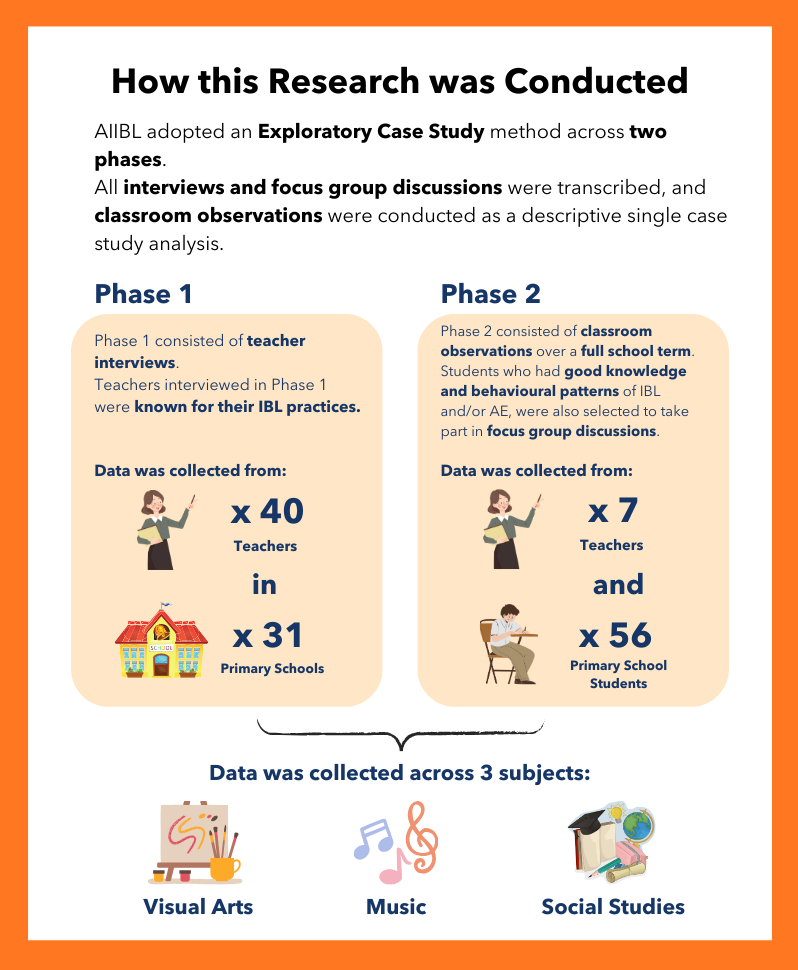
 What Does This Mean for Teaching and Learning?
What Does This Mean for Teaching and Learning?
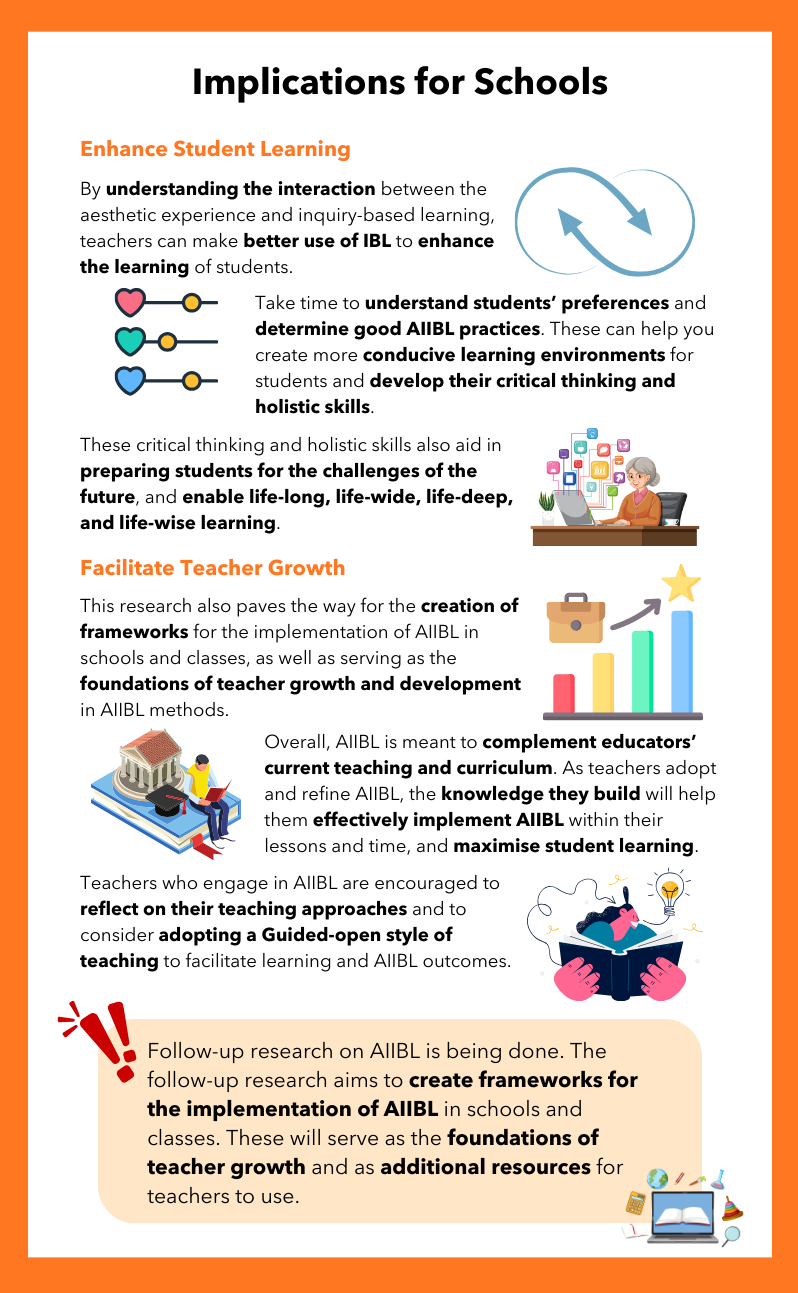
 Related Links
Related Links
 Further Readings
Further Readings
For educators interested in the research methodology behind AIIBL, you may refer to:
 Research Project
Research Project
 Research Team
Research Team
To learn more about this research, please contact Dr Pamela Onishi at pamela.onishi@nie.edu.sg.
Principal Investigator
 Acknowledgement
Acknowledgement
This study was funded by the Education Research Funding Programme, National Institute of Education, Nanyang Technological University, Singapore (project no. OER 04/20 PGCO). Any opinions, findings, and conclusions or recommendations expressed in this material are those of the author(s) and do not necessarily reflect the views of the Singapore MOE and NIE.
This knowledge resource was extracted and reconstructed from the published materials from the research team by Ms Shee Yi Xuan, Katherine with input from Dr Pamela Costes-Onishi and Ms Lorraine Ow and presented on 12 December 2024.


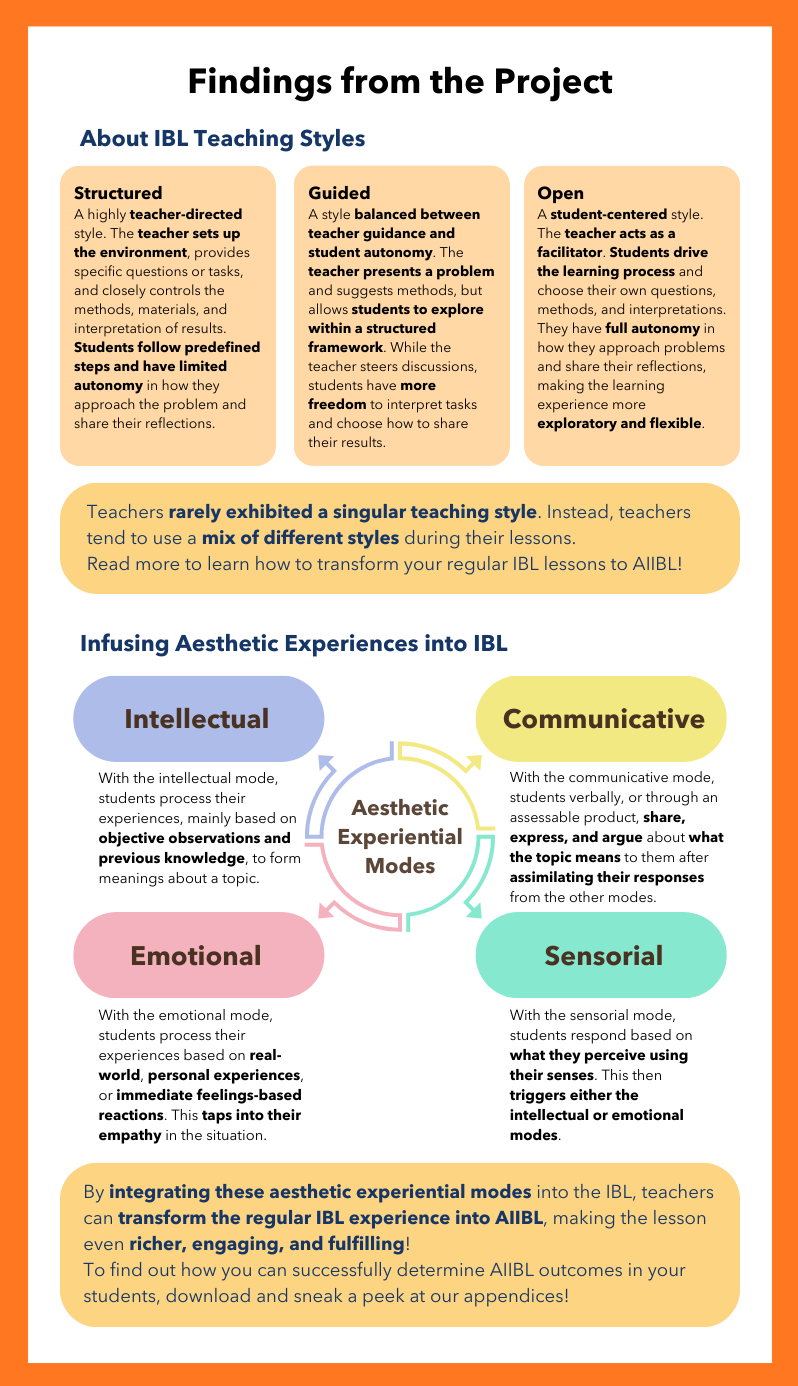
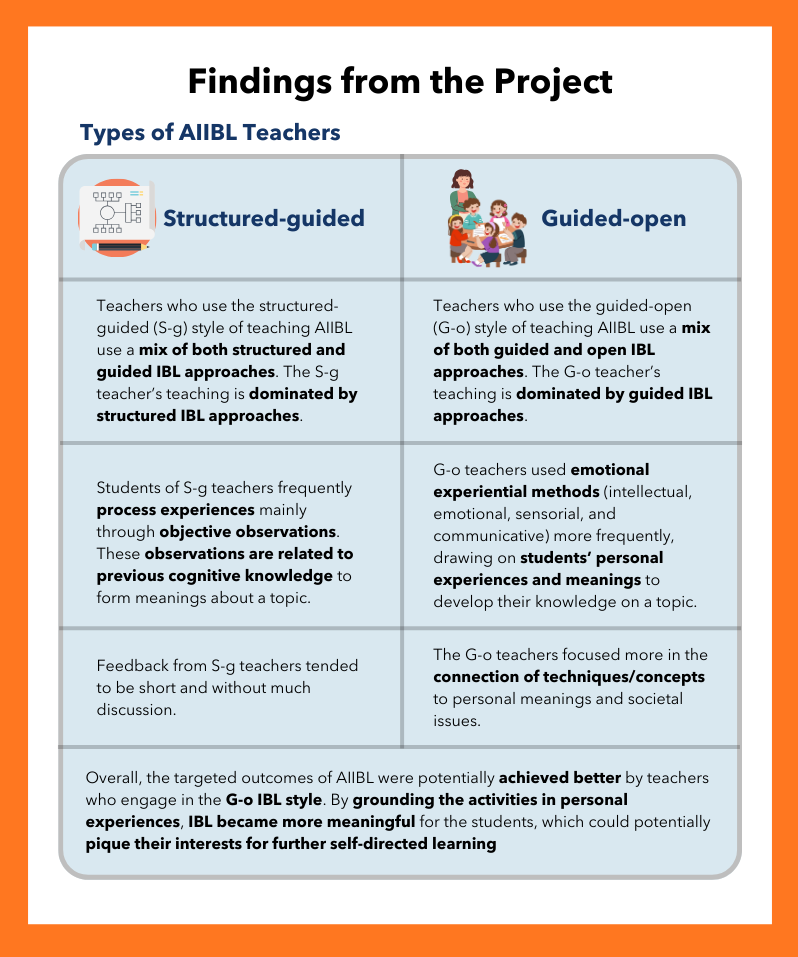
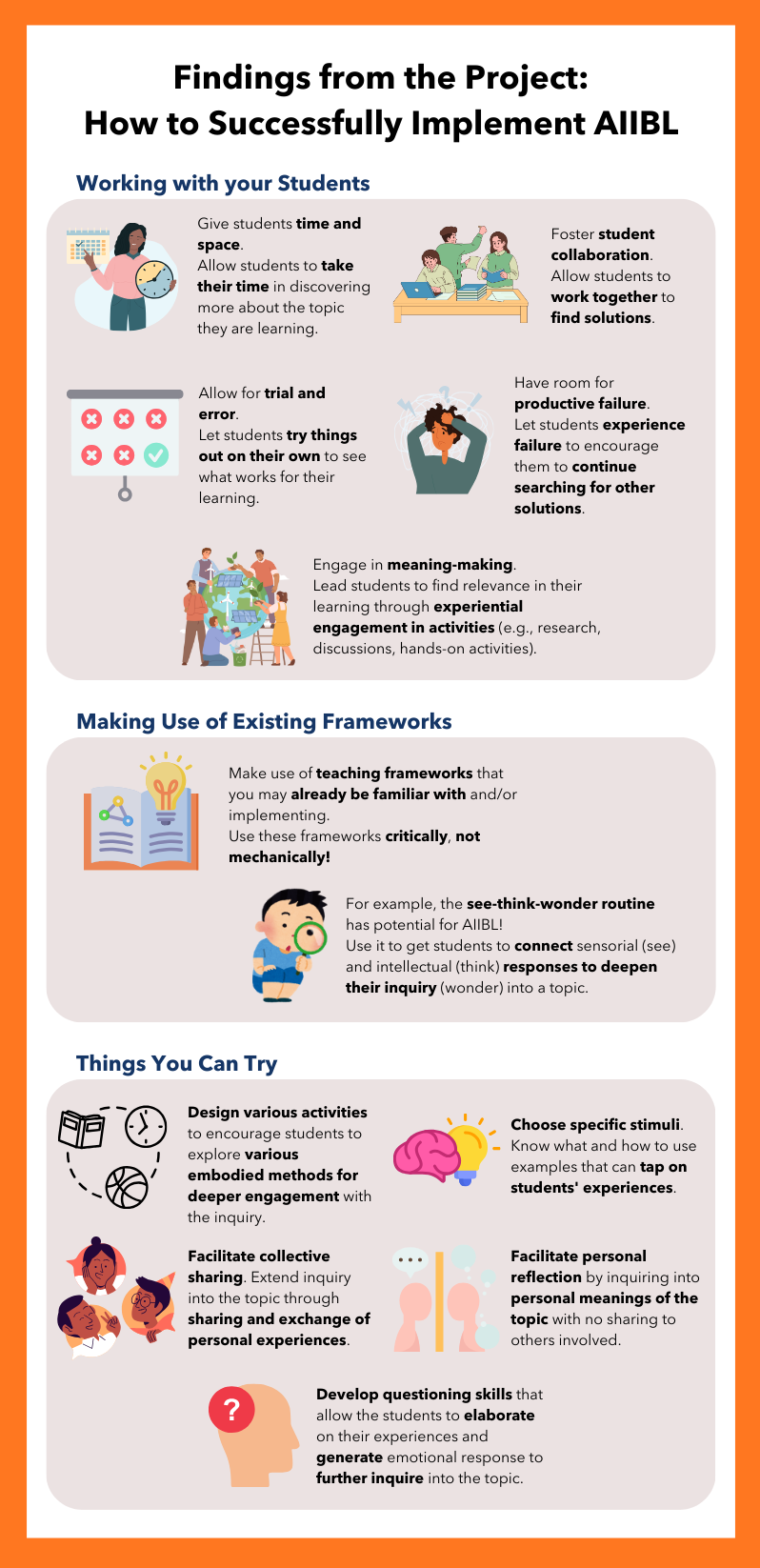
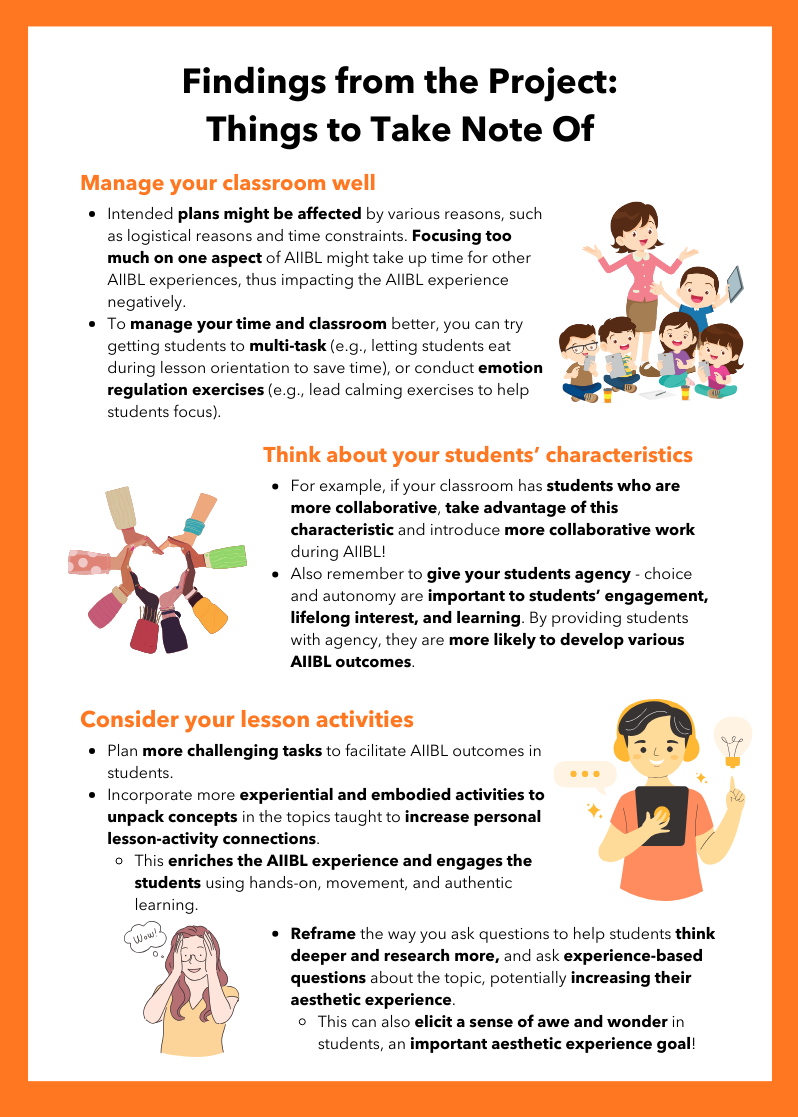

![]() Research Team
Research Team